Pimelea physodes or Qualup bell is an interesting variety of the pimelea species. While many of the other species have smaller, clustered flowers, the Pimelea physodes have larger, bell-like flowers, which develop in colour throughout the summer and winter seasons.
An ideal option for a unique feature plant, whether in a decorative pot or directly in the ground – follow our grow and care to know how to cultivate, care for and grow this incredible cultivar.
More...
Pimelea physodes Features
Family: Thymelaeaceae
Genus: Pimelea
Species: P. physodes
Common Name: Qualup Bell and Pink Rice Flower
Flower Colour: Yellow
Foliage Colour: Green
Growth Habit: Shrub to 1m
Flowering: Winter
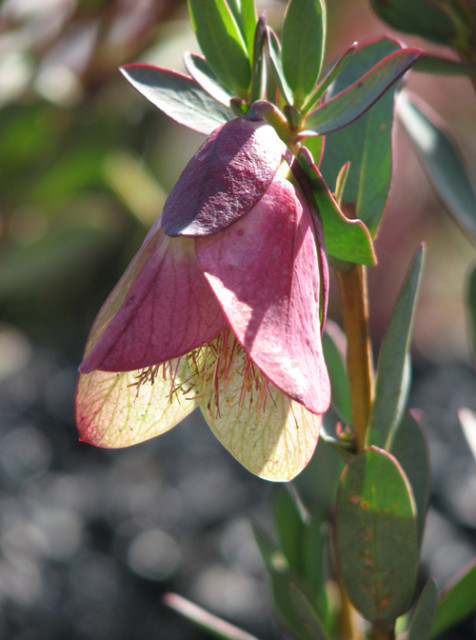
The Pimelea species include over 80 different flowering plants endemic to the coastal regions of Western Australia. Part of the Thymelaeaceae family, these plants are prized for their unique flowering habits and are often sought after for native flower arrangements.
Commonly called the Qualup bell or pink rice flower, the Pimelea physodes is a small, erect growing shrub with showy, blue-grey leaves and large drooping flowers.
The large flowers have large petals which encase smaller, pollen-producing spikes. The petals range in colour from yellow and green during the summer and a light red and purple during the winter.
Pimelea physodes is an adaptable pollen-producer that makes for the perfect decorative addition to your patio or garden landscape.
How to Grow Pimelea physodes
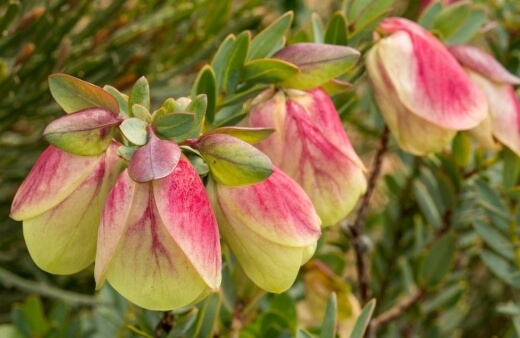
These plants have no problem growing in a range of environments, provided sufficient light, loose draining soil and a good amount of fresh air. Although these plants thrive in pots, they’re not ideal for growing indoors.
Pick an area in your garden that gets dappled morning light and is free from major drafts. Some growers recommend growing in a shaded spot, as the scorching afternoon sun can cause your Qualup bell to wilt.
However, sufficient sunlight is needed for a bountiful bloom. Try to find an area that gets 2 to 3 hours of the morning sun and will be in the shade in the heat of the afternoon.
When it comes to soil, the Qualup bell is often found growing in sandy, gravel-based soil. Ideally, you’ll want to pick a sandy or loam soil that drains freely. If you’re unsure about the soil conditions, consider growing your pimelea in a pot rather than in the ground.
While this cultivar prefers milder climates, they tend to thrive in Mediterranean conditions. So, if you are planning on growing your pimelea in a coastal area, you won’t have an issue.
Propagating Pink Rice Flowers
While most gardeners suggest buying grafted varieties of the Qualup bell from specialised, local nurseries, these plants can be propagated by means of cutting or from a seed.
However, plants that are propagated by cuttings or grafted tend to be far hardier and more resilient than ones grown from seed.


Get Your Free Guide:
Master Growing Australian Natives eBook
A Must Have Complete Guide for Every Australian Garden
Get Your Free Guide:
Master Growing Australian Natives eBook
A Must Have Complete Guide for Every Australian Garden
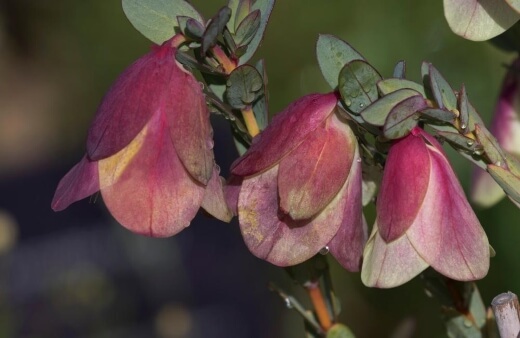
Growing Pimelea Qualup Bell from Cutting
In taking a cutting, it’s a good idea to pick a healthy, thriving parent plant. Cuttings should be taken before the growing season for the best results.
Here is what you’ll need to do:
- Remove a stem cutting 5 to 7 cm in length. Try to choose a cutting with 1 or 2 healthy nodes.
- Strip away the lower leaves of the cutting, leaving 3 to 5 healthy leaves at the top.
- Dip the cut end into a rooting hormone and plant into a small pot filled with a rich, potting soil.
- Keep the soil moist and leave your pot in a warm spot with plenty of indirect light.
Once new growth appears, cuttings can be replanted.
Growing Qualup Bell Plant From Seed
Unless seeds have been purchased from a viable seed supplier, seeds will need to be pre-treated. Still, the most successful method to guarantee germination is to soak the seed in lukewarm water overnight.
Here is what you’ll need to do:
- Prepare a seedling tray or small pot with a seed raising mix.
- Sow the seed onto the surface of the soil. Avoid burying the seed too deeply into the soil.
- Soak the soil once deeply. This will help the seed to lodge itself into the soil.
- Use a fine mist spray to keep the soil moist during germination. This will prevent disturbing the seed.
- Keep in a warm, semi-shaded spot.
Germination usually takes around 21 to 42 days. However, as with most native seeds, they tend to wait until ideal conditions to germinate, so don’t be too hasty to discard seeds if you do not see results.
Avoid sowing seeds in the hottest or coldest months of the year. The ideal germination temperature is between 15-23°C.
Planting Pimelea Qualup Bell
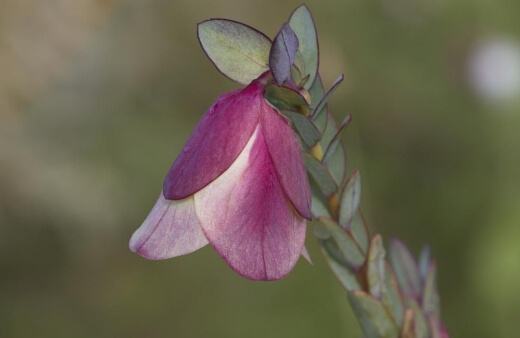
Before planting, it’s a good idea to prepare the planting site or pot. If growing in the ground, be sure to remove any weeds growing in the area. These can affect the growth of your pimelea.
If the soil is particularly compact, consider digging up the soil a few days before planting. Mix in some dry, loose organic material which will help to improve aeration and drainage.
Do not do this on the day of planting, and it is essential to allow the soil some time to settle before planting.
- Dig a hole twice the size of the rootball.
- Gently remove the pimelea from its pot, shaking it off lightly to loosen any old soil.
- Place the root ball into the hole, ensuring the top of the root ball is in line with the soil level.
- Backfill with soil and press down gently to remove any air pockets. Young plants enjoy being slightly root bound, so pressing down the soil will help to compact the roots and keep young plants stable.
- Water well for the first few days after planting.
The best time to plant is in early spring before temperatures get too hot. Young plants can also be somewhat fragile. As such, they should be protected from major storms or strong, excessive winds.
Staking young plants is also an option. However, the stake should be removed after the first 4 months to avoid them affecting the roots.
Do not grow these plants in soils that have had exposure to Phytophthora. This is a major issue in many landscapes and will result in dying plants. Should you be concerned about this issue, choose to grow plants in a pot or a container.
Qualup Bell Care Tips
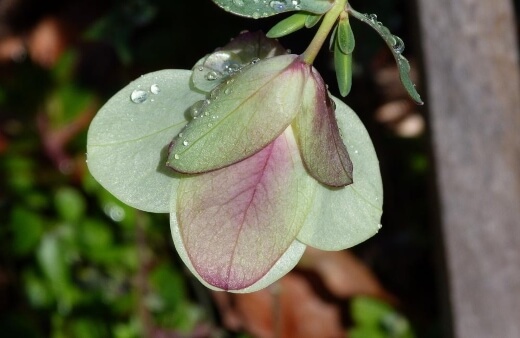
The pimelea qualup bell needs very little care or attention once established. They’re incredibly hardy plants and don’t need much moisture to thrive.
Still, these plants do enjoy some light fertilising and annual pruning, which help them bloom and thrive year after year. Fertilise your plants with a native fertiliser once every spring.
This will give the perfect nutritional nudge to thrive during the growing season. Avoid fertilising more than once, as over-fertilising can often lead to unwanted issues.
Water it well after fertilising as this will dilute the fertiliser and avoid leaf burn. When it comes to pruning, it’s best to take it easy in the first year or two. Prune lightly cutting back only a little at this time.
Thereafter, plants can be cut back as much as 1/3 each year after flowering. This will encourage new, dense growth the following year. Plants can be watered every now and then in dry spells.
Keep in mind that they’re drought-tolerant, so too much watering can lead to fungal infections and root rot.
Common Pink Rice Flower Pests & Problems
Unfortunately, there is little information regarding specific pest issues with Qualup bell. However, in unideal conditions, it can be presumed that these flowering plants can be susceptible to common gardening issues like spider mites, aphids and root rot.
It can also occur that plants become infested with moth larvae before flowering. These larvae will destroy developing flowers, so it is essential to treat should the issue occur. Plants can be sprayed regularly with a natural insecticide.
Of course, one aspect you will be looking forward to is the plenty of non-harmful garden visitors your pimeleas will bring to your garden. Being a nectar-rich plant, it will invite plenty of local birds, bees and butterflies to your garden.
Using Pimeleas in Your Garden
We’ve already mentioned how perfectly suited these plants are for growing in decorative pots or planters, but there are so many ways you can incorporate this gorgeous grower into your garden.
Qualup bell can be grown as a stand-alone feature plant or a long-spreading shrub. More so, it can also be used as a filler plant alongside other native plants in your garden.
Are you looking for some other flowering pimelea species? Take a look at the following growing guides:
Pimelea physodes Frequently Asked Questions
How do you propagate pimelea?
These shrubs are best propagated from cuttings from firm new growth with the use of a rooting hormone.
Is pimelea an Australian native?
The genus of about 80 species is mostly native to Australia but some also occur on islands to the north as well as in New Zealand.
Can you prune pimelea?
These shrubs have a naturally compact growing habit but pruning off old flowers once they are finished will encourage and enhance the dense habit.
Is pimelea poisonous to dogs?
These plants are considered highly toxic to cats and dogs. The toxic components of the plant can cause severe congestive issues as well as heart failure in some animals.
How do you grow pimelea?
These shrubs love well-drained soils and sunny positions. Feeding with a quality native fertiliser in spring and then watering in well afterwards will also boost the general health of these natives. Be sure to also prune off old flowers as needed.
Is the pink pimelea endangered?
Unfortunately, these shrubs are becoming more endangered over time due to loss of habitat and urbanisation. High-frequency fire can also cause the death of many young plants.
How long do rice flowers last?
The vase life of these blooms is considered good, lasting for 10 days or more after being cut. You can also dry these flowers and they will keep their shape and colour.
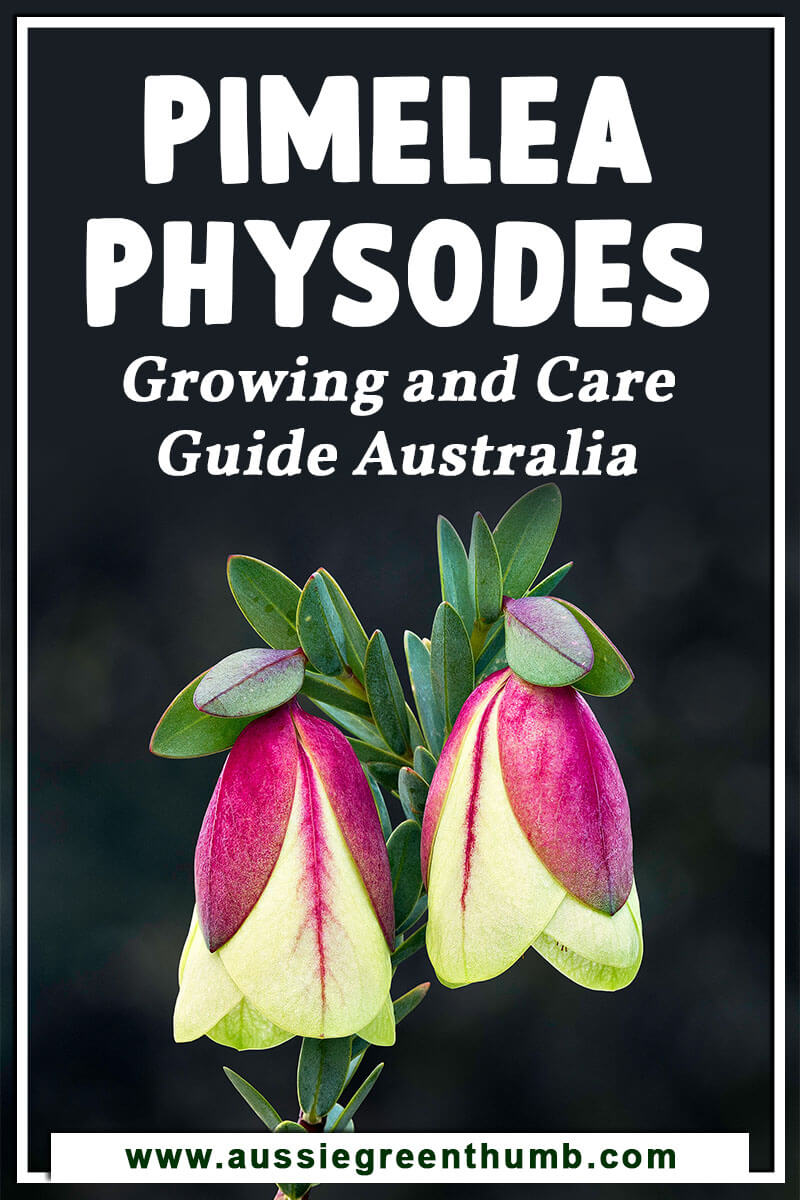
Make Your Garden More Gorgeous by Growing Pimelea physodes!
Pimeleas are the perfect choice for Australian gardeners who are looking to add an exciting, floral element to their garden. As the Pimelea physodes are such a hardy grower, you will have little to no issue growing a gorgeous, blooming plant that provides a spectacle throughout summer and winter.
Published on January 5, 2023 by Lorri Hopkins
Last Updated on October 1, 2025





Just gone through your blog showing the Plant of the Month – Pimelea 2 and found it to be impressive. It really made my day.
It’s a lovely plant … thanks for posting these two snippets … I’ve never seen these before.
I love the look of this plant. I live in the south west where it grows. But cant find a nursery that sells it. Have tried seeds with no success.